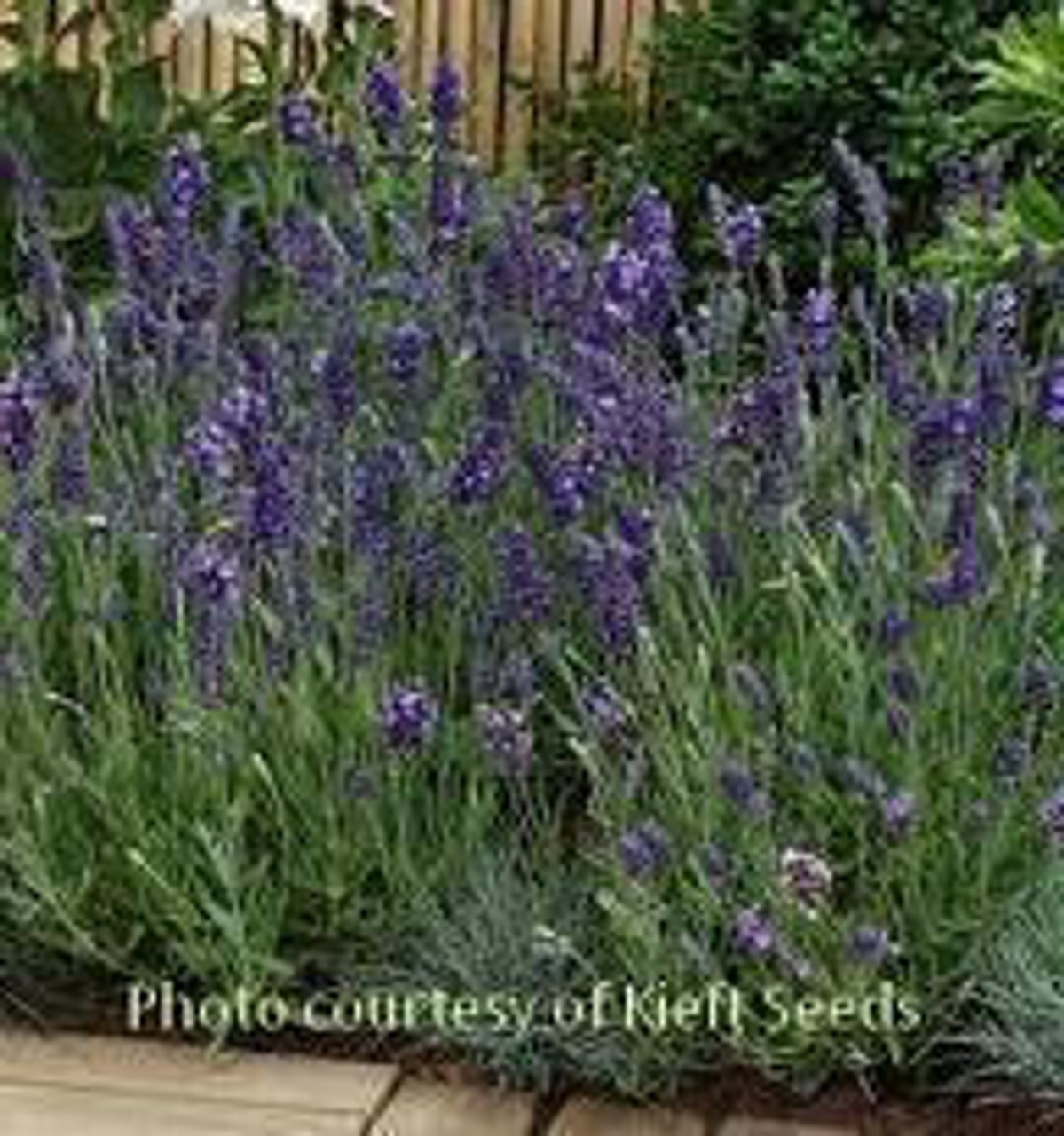Product Description
Lavandula angustifolia 'Ellagance Purple' (10)ct Quarts
Common name: English Lavender.
Zones 5 to 9.
Full sun; to flower, Lavender must be grown in full sun.
Plants reach 12 inches tall and 10 inches wide.
Clump forming habit.
Growth rate: Moderate, erect herbaceous clump-forming perennial.
'Ellagance Purple' performs admirably in the garden, producing masses of fragrant, intense purple-blue blossoms atop bushy mounds of silver-green foliage from midsummer through early fall.
2008 Fleuroselect Gold Medal
Lavandula angustifolia 'Ellagance Purple' is a popular cultivar of English lavender, prized for its vibrant color, compact habit, and delightful fragrance. Here is a summary of its key features:
Characteristics:
- Flower Color: Rich, deep purple flowers that bloom profusely in early summer and often continue into fall.
- Fragrance: Strong, classic lavender scent, ideal for aromatherapy and relaxation.
- Growth Habit: Compact and well-branched, reaching a height of 12-14 inches with a similar spread.
- Foliage: Silvery-green, aromatic foliage that adds beauty even when not in bloom.
- Hardiness: Hardy in USDA zones 5-9, tolerating cold winters and moderate heat.
Cultivation:
- Sunlight: Requires full sun (at least 6-8 hours per day) for optimal growth and flowering.
- Soil: Thrives in well-drained soil with a slightly alkaline pH. Avoid heavy clay or wet soils.
- Water: Drought-tolerant once established but benefits from occasional watering during prolonged dry spells.
- Pruning: Light pruning after flowering encourages bushier growth and repeat blooming.
- Fertilizer: Generally not required, but a light application of balanced fertilizer in spring can be beneficial.
Uses:
- Landscaping: Ideal for borders, rock gardens, herb gardens, and containers.
- Cut Flowers: Excellent for fresh or dried arrangements.
- Aromatic Use: Dried flowers can be used in potpourri, sachets, and essential oil extraction.
- Culinary Use: The flowers are edible and can be used sparingly in baking and desserts.
Advantages:
- Early Blooming: Flowers earlier than many other lavender varieties.
- Uniform Growth: Maintains a neat and tidy appearance.
- Strong Fragrance: Intensely fragrant flowers.
- Versatile Use: Suitable for a wide range of garden applications.
Overall, Lavandula angustifolia 'Ellagance Purple' is an excellent choice for gardeners seeking a compact, colorful, and fragrant lavender variety. Its adaptability to various conditions and long blooming season makes it a valuable addition to any garden.
Ten (10) plants in quart containers per flat (or tray).
Other Details
The most important part of the plant is its root system. Healthy roots are the foundation of a healthy, vibrant plant. The type of plug container used is based on the specific needs of the plants. Perennials offered as bare root traditionally perform better when planted as bare root.Planted in a specialized mix, potted plants have well established root systems. Top growth stage will vary depending on the current life cycle and time of year when shipped. In Winter and early Spring dormant plants may be shipped. Dormant plants may be planted right away, even before the last frost date.
Most bare root varieties are field grown for at least one season, though Hemerocallis and Hosta are grown for two seasons. The bulk of the soil is removed during the harvesting process and the tops of most varieties are trimmed back to the crown. They are graded, packed in shredded aspen or sphagnum moss and stored in freezers until ready to be shipped.
See our Container Sizes and Bare Root Perennials pages for more information.
Plant information and care is provided in the Overview section, Plant Genus Page and general information is provided in the Planting Care & Guides. Additional questions can be asked on each Plant page.
Plant Spacing: Using the maximum mature spread or width of a plant to guide spacing, ensures space to grow to full size. To fill an area sooner, plant them closer together. Just remember, future thinning or transplanting may be needed.
Water: Keep a close eye on newly planted perennials, especially throughout the first growing year. Most early plant loss is due to too much or too little water!







